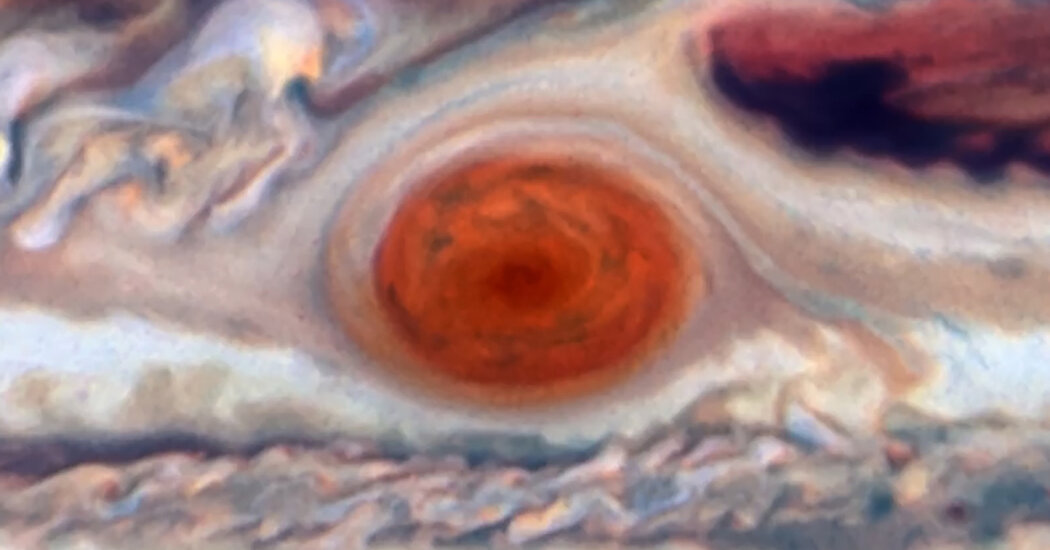A sequence of images captured by NASA’s Hubble Space Telescope showed how much the giant storm changed shape as it traveled within the planet’s atmosphere.
The Great Red Spot of Jupiter is one of the solar system’s most astonishing marvels. An elliptical storm with inky swirls of burnt orange and dulled copper, it is longer than the Earth is wide, and its winds screech through the tops of the planet’s clouds at 400 miles per hour.
The spot may seem like an unchanging fixture from a distance. But scientists have now discovered that it is jiggling and changing shape, repeatedly elongating and then contracting as it circumnavigates Jupiter’s southern hemisphere like a bright red kickball bouncing through a schoolyard.
Astronomers say that the Great Red Spot hasn’t always looked as it does today. But finding that it was able to transform during a 90-day period of observation came as a shock. “We were very surprised,” said Amy Simon, a planetary astronomer at NASA’s Goddard Space Flight Center and an author of a study published this week in The Planetary Science Journal.
While it’s possible to see something ball-like in the locomotion of the Great Red Spot, some scientists see a living creature. The storm “behaves like a slug, contracting and stretching as it moves around the planet,” said James O’Donoghue, a planetary astronomer at the University of Reading in England who wasn’t involved with the study. “It’s a Great Red Slug.”
Whatever one thinks it mimics, astronomers have no clue as to why the spot is behaving this way. “It is a mystery how this process works in terms of the underlying physics,” Dr. O’Donoghue said.
The Great Red Spot, which rotates counterclockwise, has been continuously observed for the last 150 years. It probably hasn’t always been present on Jupiter, at least not in its current form, and its origins are not clear.
